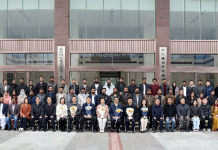December 27, 2019 marks the starting point for China’s battle against the novel coronavirus. It was on that day that Zhang Jixian, a doctor at the Hubei Provincial Hospital of Integrated Chinese and Western Medicine, first reported cases of what was then called a “pneumonia of unknown origin.” One year has passed, with the wounds the lethal virus inflicted on Wuhan gradually healing, although some Western countries are still leveling blame against China for its initial anti-virus response. It is meaningful and necessary to review the first 40 days following December 27, 2019, to see how the medical staff in Wuhan strived to save patients’ lives, what the residents experienced and how the enormous nation-wide aid to the city helped restore order.
For Xie Yu (pseudonym), a 37-year-old civil servant in Wuhan, capital of Central China’s Hubei Province, her memories of the days approaching year end of 2019 are vague. “I’d planned for days to celebrate the New Year with my colleagues on the beach by the Yangtze River, but in the end, I worked overtime on December 31 and shared some late-night snacks with a few friends.” Having lived in Wuhan all her life, Xie said that she had experience of going through a major disaster when the city suffered catastrophic floods in 1998. But 2019 had been largely uneventful, and she and the other 11 million residents of the city never imagined that such a great danger was lurking underneath their peaceful life.
Doctors and medical professionals remember the end of 2019 quite differently.
On December 27, 2019, Zhang Jixian, the director of respiratory and critical care medicine department of the Hubei Provincial Hospital of Integrated Chinese and Western Medicine, noticed four patients from two different families who were displaying similar symptoms – a cough, fever and infected lungs. After the patients had CT scans, she diagnosed viral pneumonia and in addition found that these patients could all be linked to the nearby Huanan wet market. She reported the situation to Jianghan district center for disease control and prevention. December 27, 2019 was later identified as the starting point for China’s fight against the coronavirus epidemic according to the white paper released by the State Council Information Office in June. “After reporting the situation, our hospital organized a discussion on the cases on December 29, 2019 – a Sunday I remember – attended by disease control and prevention authorities at district, city and province levels,” Zhang Jixian told the Global Times. At the same time, more patients with similar symptoms were found in the Central Hospital of Wuhan, another hospital close to Huanan wet market. Tao Jun (pseudonym), told the Global Times that the hospital admitted four patients who were exposed to the wet market, and they displayed symptoms of fever and infectious lungs on December 28 and 29, 2019. Changing moment: As the number of infections quickly increased, the central government took a swift response. On wee hour of January 23, the Wuhan City Novel Coronavirus Prevention and Control Command Center issued the No. 1 public notice declaring a temporary closure of the city’s outbound routes at its airports and railway stations starting from 10 am the same day.
– The Daily Mail-Global Times News exchange item






